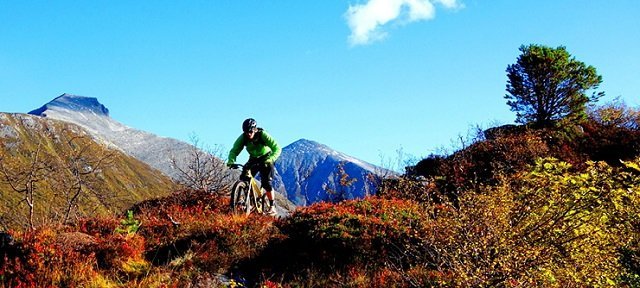To escape the merciless Syrian civil war, Syrian refugees biking across the arctic border is happening. Read the diary of the journey Syrian refugees are taking to escape the Assad atrocities.
“I looked at the map and I decided to give it a go”: Ahmad Taleb is one of a number of crafty refugees who have reached Europe by cycling across the border into Arctic Norway.
Norwegian police say that since the beginning of the year, more than 200 asylum seekers, the large majority of them fleeing the war in Syria, have crossed the border from Russia into wealthy Norway.
While it is not a member of the EU, Norway belongs to the Schengen zone allowing free circulation of movement.
The roundabout journey through often inhospitable regions opens Europe’s doors to the refugees, without them having to face the perilous Mediterranean crossings risked by hundreds of thousands of others aboard unseaworthy and overloaded boats, before heading off on a land journey full of stumbling blocks through Europe.
More than 380,000 migrants and refugees have arrived in Europe since January, and 2,850 have lost their lives trying to do so or are missing, according to the latest UN figures.
“By sea, it’s dangerous,” says Taleb, a 25-year-old Syrian Kurd sitting at the Refstad refugee transit center in Oslo, where migrants are sent once they’ve crossed the border.
“But if you buy the visa (for Russia), you just pay and you go. That way is faster and safer,” he adds.
Seven days earlier he left Kobane, a town ravaged by fighting between Kurds and Islamic State jihadists who were ultimately driven out in June.
The idea to travel to Europe through Russia came to him after speaking to people on Facebook, he says.
Wary, waiting to be transferred to an asylum center with his few belongings shoved into a black garbage bag, he refuses to disclose the intricate details of his journey.
It appears relatively easy for Syrians to get a visa for Russia since the two countries enjoy good relations. After flying to Moscow, Syrians typically travel by train to Murmansk in northwestern Russia, and then on to Nikel, about 20 kilometers (12 miles) from Norway.
There, they buy … a bicycle, often at a hefty premium.
“We paid a lot of money but we didn’t ask too many questions,” says Bahzad Soliman, another Syrian refugee who spent the past three years in Moscow, living off of odd jobs before growing tired of being unable to sort out a more permanent situation for himself.
Thus, Syrian refugees biking across the Arctic border seems the best solution.
– Legal passage –
Oddly enough, cycling is almost the only legal way for refugees to cross the Storskog border post between Norway and Russia.
Only vehicles are allowed to cross the border, and a bicycle is considered a vehicle.
On the Russian side, authorities do not let pedestrians cross, while on the Norwegian side, police recently began imposing heavy fines on those who take refugees in their car, saying it amounts to human trafficking.
As a result, police in Kirkenes, the closest Norwegian town to the border, now have a stock of some 65 bikes, many almost new, which it doesn’t know what to do with, their brief owners having been flown to Oslo by authorities to submit their asylum requests.
Most of the bike crossings have taken place in recent weeks, but some also crossed the border last winter in subzero temperatures with snow-covered roads.
At the Refstad refugee transit centre — a former recreation center for Nazi officers during the World War II occupation — the Syrians interviewed said their journey through the Great North cost between 3,000 and 4,000 euros (between $3,350 and $4,500).
“It’s not expensive compared to what they often have to pay to smugglers to go by the usual routes,” explains Solveig Skogstad at NOAS, a Norwegian organisation that helps asylum seekers.
“Some pay several thousand dollars to come illegally, whereas this is legal and not dangerous.”
Or almost: “From what we understand, there is a lot of concern about what can happen in Russia,” she says.
“Russian authorities can also be very severe if you arrive without all your papers in order.”
Since the beginning of the year, around 1,800 Syrians have requested asylum in Norway, which is governed by a coalition that includes a populist anti-immigration party.
That figure is just a fraction of the 15,000 Syrians who have requested asylum in neighboring Sweden, which has a more generous asylum policy.
AFP contributed to this article.



COMMENTS